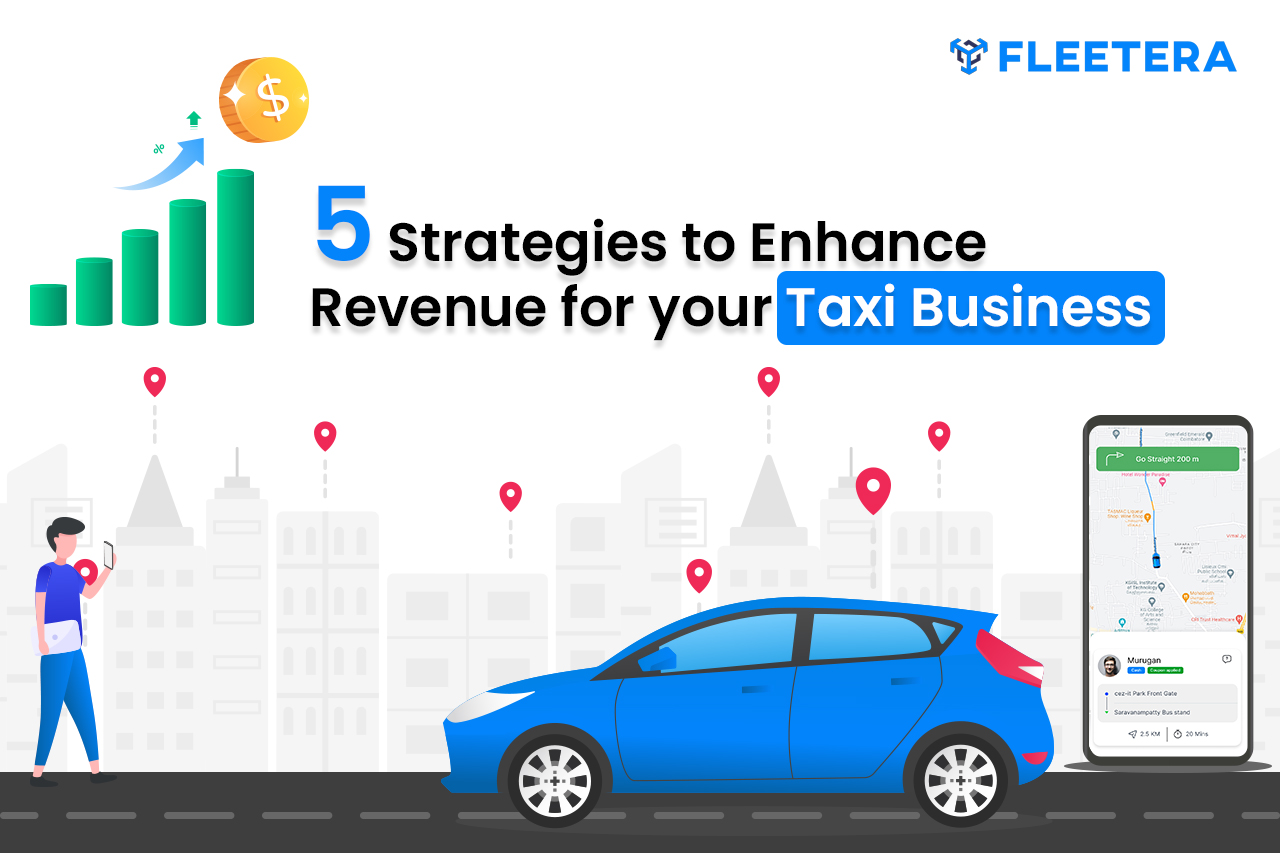Blog
5 Strategies to Enhance Revenue for your Taxi Business

Revenue growth is crucial for taxi businesses as it directly impacts profitability and sustainability. With increasing competition and changing consumer preferences, maintaining and improving revenue is essential for staying competitive. Implementing effective strategies to boost revenue is vital for taxi businesses to thrive in a dynamic market environment and ensure long-term success.
1. Understanding The Current State Of The Taxi Industry
The taxi industry faces various challenges, including competition from ridesharing services, regulatory hurdles, and shifting consumer behaviors such as the preference for convenience and affordability. There's a pressing need for innovative revenue-boosting strategies to overcome these challenges and adapt to the changing landscape effectively.
2. Targeting The Suitable Customer Base
Potential customer segments for taxi services may include tourists, business travelers, commuters, and individuals seeking transportation for special events or occasions. Tailoring marketing efforts to reach these target customers involves utilizing platforms and channels frequented by the identified segments, such as social media, local events, and partnerships with hotels and tourist attractions. Customer retention and loyalty programs are essential for fostering repeat business and long-term customer relationships.
3. Enhancing Customer Experience
Excellent customer service is pivotal in attracting and retaining customers, leading to increased revenue through positive word-of-mouth and repeat business. Tips for improving the overall customer experience include:
- Maintaining cleanliness
- Offering timely and safe transportation
- Providing courteous and knowledgeable drivers
Driver training and professionalism are crucial to enhancing the customer experience and differentiating the service from competitors.
4. Utilizing Technology For Revenue Growth
Implementing mobile apps for taxi businesses can streamline booking processes, improve customer accessibility, and enhance overall service quality. GPS tracking and dispatch systems enable efficient operations, minimizing customer wait times and optimizing driver routes. Online booking platforms widen the customer reach and facilitate seamless reservations, contributing to revenue growth.
5. Partnerships And Collaborations
Collaborating with local businesses and hotels can lead to mutually beneficial arrangements, such as referrals and promotional tie-ins, expanding the customer base and boosting revenue. Corporate partnerships offer opportunities for steady revenue streams through contracts for employee transportation or special event services. Networking within the industry fosters alliances and opportunities for growth, emphasizing the importance of building relationships.
6. Pricing Strategies For Revenue Optimization
Dynamic pricing models and surge pricing during peak hours help maximize revenue by adjusting fares based on demand and supply dynamics. Offering discounted packages and loyalty programs incentivizes repeat business and customer loyalty, contributing to revenue growth. Monitoring market demand and adjusting pricing strategies is essential for staying competitive and optimizing revenue.
7. Expanding Service Offerings
Offering additional services such as airport transfers, package deliveries, or specialized event transportation expands revenue streams and diversifies the business. Diversification mitigates risks associated with dependency on a single service and taps into new revenue opportunities within the existing customer base. Market research is crucial before expanding service offerings to ensure alignment with customer needs and preferences.
8. Monitoring And Analyzing Key Metrics
Tracking revenue-related metrics such as total revenue, average fare per trip, and customer acquisition cost is essential for assessing business performance and identifying areas for improvement. Key performance indicators (KPIs) to monitor may include customer satisfaction ratings, driver utilization rates, and booking conversion rates. Data analysis provides insights into customer behavior, market trends, and operational efficiency, enabling informed decision-making and strategic adjustments to maximize revenue.
Final Thoughts
Revenue growth is fundamental for the success of taxi businesses, necessitating proactive measures to adapt to market dynamics and consumer preferences. Implementing effective strategies outlined in this plan is crucial for boosting revenue, ensuring competitiveness, and sustaining long-term profitability. Taxi business owners are encouraged to take action and explore the suggested strategies to drive revenue growth and secure their place in the evolving transportation industry.


.webp)